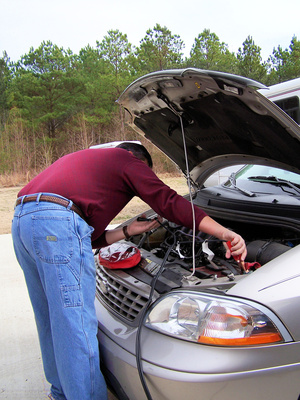
While battery terminal corrosion is not as prevalent in modern cars as with classic cars or older daily drivers, automotive battery corrosion is caused by a multitude of reasons. In most cases, a badly corroded negative terminal can be cleaned and restored without replacing the battery.
Small amounts of the battery's sulfuric acid may leak out over time or if the battery has a poor connection to the wires. Don't be alarmed. Corrosion on either terminal of the battery could indicate that the acid is eroding the iron in the wires.
Each battery terminal has a charge, and the charge from both the negative and positive terminals can draw dust, dirt and sulfuric acid vapor to the surface of the battery. Acid vapors escape the battery through vents when the temperature is warm. The color of the buildup with vary based on what the sulfuric acid vapor is eroding: white indicates a lead surface, while green indicates a copper surface.
A badly corroded negative (or positive) car battery terminal could indicate that it's time to clean dust, dirt and other buildup from the terminal. Most auto care stores sell firm-tooth wire brushes that are shaped for cleaning battery terminals.